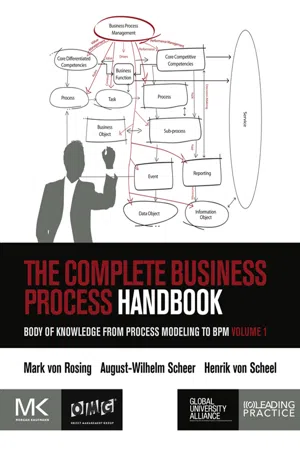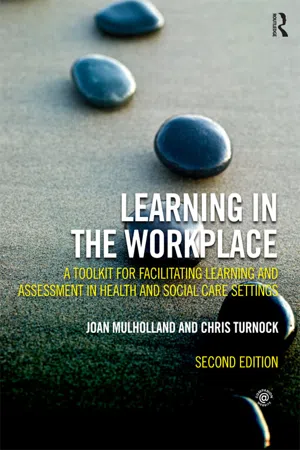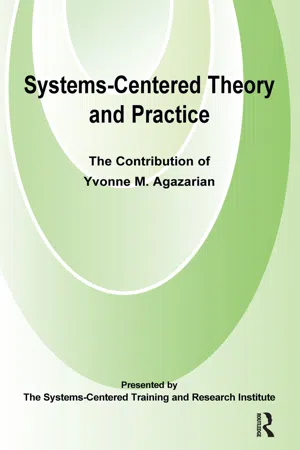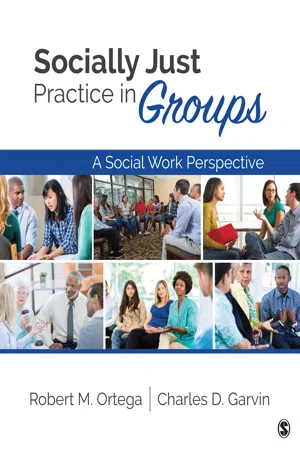Business
Group Roles
Group roles in business refer to the specific functions and responsibilities assigned to individuals within a team. These roles can include leadership, coordination, communication, and task execution. By clearly defining and assigning group roles, teams can operate more efficiently, leverage individual strengths, and achieve collective goals.
Written by Perlego with AI-assistance
Related key terms
Related key terms
1 of 4
Related key terms
1 of 3
6 Key excerpts on "Group Roles"
- eBook - ePub
Racial and Cultural Dynamics in Group and Organizational Life
Crossing Boundaries
- Mary B. McRae, Ellen L. Short(Authors)
- 2009(Publication Date)
- SAGE Publications, Inc(Publisher)
6Social Roles in Groups
R ole, in groups, in organizations, and in institutional contexts, has been defined in a variety of ways. According to the Merriam-Webster Dictionary, role is defined as (1) “a character assigned or assumed” (such as the role of father or mother) (2) “a socially expected behavior pattern usually determined by an individual’s status in a particular society” (such as an actor, teacher, athlete), and (3) “a function or part performed especially in a particular operation or process” (Merriam-Webster Dictionary Online, n.d). Social roles in groups and organizations are related to the character—leader, member, administrator—the social expectations of those who take up these roles, and the function that each serves on the part of the group or organization. In this chapter, we discuss social roles in racially and culturally mixed groups. We purport that there are added assumptions, perceptions, and attitudes ascribed to those who take up the various social roles in groups due to the social and cultural context in which the group takes place. Some awareness and understanding of the dynamic intersection of these factors are crucial in working with diverse groups and organizations. First, some definitions drawn from the group literature are provided, and then five types of social roles are outlined. Finally, social roles, as they relate to group-as-a-whole, role suction, and racial-cultural factors involved in role taking in groups, will be explored.Wells (1990) stated that roles are formed based on the expectations, projections, and projective identification of the group members and are both defensive and adaptive for group life. He defined role differentiation as “the vehicle by which group members manage their conflicts, ambivalence, and tasks” (p. 67). His description is related to the expectations and symbolic meaning of the role taken. The description of taking up a role provided by Gillette and McCollom (1995) is more functional in terms of what an individual symbolizes in service to the group. Roles are characterized by differentiation that helps to manage anxiety, defend against de-individualization or estrangement, and contribute to the group’s structure and process, all in service of the group’s task. - eBook - ePub
Difficult Decisions
How Leaders Make the Right Call with Insight, Integrity, and Empathy
- Eric Pliner(Author)
- 2022(Publication Date)
- Wiley(Publisher)
CHAPTER 5 Role ResponsibilitiesWhat is the difference between a job and a role?We use this language interchangeably, but these are not simple synonyms. While a job consists of one or more tasks for which its holder accepts responsibility, a role goes beyond that definition to encompass the broader context or ecosystem. Execution of a job can exist on its own, with deliverables that define its successful or unsuccessful execution. A role, however, exists in relationship to other people, not just to outcomes. A job has requirements; a role has requirements and interpersonal dynamics.Perhaps obviously, clarifying the requirements and expectations of one's role is essential to effective leadership. Is the leader obligated to fulfill all requirements and manage all interpersonal dynamics equally? What results do different players expect? When and how do their expectations outweigh those of others in a stakeholder constellation? In other words, should employees, customers, and communities be treated with the same regard as owners and investors? And what happens when their respective needs are in conflict?The word role comes originally from theater, from the literal roll of paper upon which an actor's lines were written. Like an actor in a play, someone who holds a role in an organization has an audience looking to her to convey a message, tell a story, enable a change, or inspire an emotional reaction. Every person in a role has others depending on her, including customers and colleagues in more or less senior positions. Her colleagues' ability to perform their own roles is contingent not only on her ability to interface with them skillfully but also on how well she can communicate with others, who may or may not be in the same physical spaces.The people who depend on one another in an organization are called stakeholders, and they tell us a lot about with and for whom we are working. In servant leadership, employees are the critical stakeholders, letting their leaders know what they need to be able to do their jobs as successfully as possible. Stakeholder capitalism suggests that the mission of business leaders is “serving not only shareholders, but also customers, suppliers, workers, and communities.”1 - eBook - ePub
The Complete Business Process Handbook
Body of Knowledge from Process Modeling to BPM, Volume 1
- Mark Von Rosing, Henrik von Scheel, August-Wilhelm Scheer(Authors)
- 2014(Publication Date)
- Morgan Kaufmann(Publisher)
Figure 2 , many roles can be assigned to a single position or actor; similarly, one role can actually be performed, if it is deemed necessary, by many resources, who would then be granted all the same rights and have the personal competency to perform and engage in the same work. By separating the resource loading and work distribution questions that are inherently distinct from the role implementation and capacity issues, these can be ignored until the later stages of design as we focus on the parts that are played within the business process. In addition, hidden in this representation is resolution of conflict–separation of function and control: cashier versus daily depositor versus bookkeeper versus supervisor.This should be consistent with personal experience; a person can act in many roles at the same time or at different times. We know in our personal lives that a person can, for example, be a daughter, mother, soccer coach, lawyer, and wife within the same person. Similarly, it would be reasonable for a large organization to have many accounts receivable clerks, many programmers, etc.In the formal sense, a role is a set of rights and privileges (authorizations and accountabilities) together with human capability (skills, knowledge, and present and future decision-making ability) involved in the execution of a set of tasks:1. The role of teacher involves specific instructional skills used to impart knowledge of a particular kind (e.g., mathematics, history, English literature) within an institutional framework (i.e., the authorizations).2. The role of application security analyst involves the use of specific analysis skills that apply security principles (i.e., the knowledge) to the evaluation of computer programs (i.e., the accountability) for ensuring the protection of data and processes within an automated software product.7The context for the definition of role is applicable only within an organization, whether public, private, or not for profit. Although individuals acting on their own behalf have roles, they are not subject to the same methods of classification. For example, individuals acting on their own behalf in transformational or transactional work may be assigned the role of customer and act in this role throughout all views of the work. - eBook - ePub
Learning in the Workplace
A Toolkit for Facilitating Learning and Assessment in Health and Social Care Settings
- Joan Mulholland, Chris Turnock(Authors)
- 2012(Publication Date)
- Routledge(Publisher)
Wherever people work together, groups will be formed. People will belong to one or more group, with each group having a different goal and purpose. These groups may be formal or informal. Formal groups are created to complete defined tasks, whilst informal groups are created voluntarily and are made up of individuals with common interests or roles. Informal groups are not usually recognised by the organisation, but they can have a significant impact upon the work of others and can, therefore, be a useful resource when considering learning opportunities for a student.The work-based facilitator and the student constitute a group and their interaction can reflect the advantages and problems often associated with group interaction. Four aspects of groups are important to how they function, namely group size, roles of members, group norms and group cohesion.• Group size: the number of people in a group can affect the dynamic of the group and its effectiveness. Group members are usually more satisfied in small groups, but group performance will depend on the task to be performed.• Members’ roles: various important Group Roles have been identified by Porteous (2012), including: 1 Task roles: helping a group to reach its goals. 2 Maintenance roles: supporting and nurturing other group members. 3 Self-centred roles: providing self-gratification to individual members even at the expense of the group. • Group norms: this is the standard of conduct that the group members accept and the rules for what must or must not be done. • Group cohesion: the member’s attraction and loyalty to the group. ACTIVITY 5.1Working in groups is an important part of work-based learning. The following activities are designed to help you reflect upon your experiences and how you can help groups work effectively. - eBook - ePub
Systems-Centred Theory and Practice
The Contribution of Yvonne Agazarian
- Yvonne M. Agazarian(Author)
- 2018(Publication Date)
- Routledge(Publisher)
The term “role” often appears in social psychology, and it is frequently defined as being equivalent to the expectations that are placed on a person. In an occupational context, role is sometimes regarded as being comparable to a work description: “Your role is to … ” The limitation of such definitions is that they are directive and static; someone else is defining our roles. However, that is hardly the way it works in practice. No one can do a job merely by following work instructions, and problems soon arise if we simply do what others expect us to do. In all occupations, it eventually becomes necessary to make independent judgments and prioritisations. Moreover, it must be taken into account how the choices that can be made are affected by dynamic and variable surroundings.Another way to consider role is illustrated by group psychology, in which it is common to designate roles such as these: the talkative one, the informal leader, the quiet one, and the person in need, etcetera. Furthermore, a deep psychological (Jungian) version of organisational psychology has given role names such as the following: the king, the princess, the hero, the wise woman, the witch, and the clown, etcetera. The fundamental concept is that, under the surface in each group or organisation, a drama is unfolding that comprises an array of roles, and the way that people act is influenced by factors such as history, context, task, and group composition. Indeed, it can be rather amusing and interesting to use fairy tales to try to identify the roles that different people have adopted in your own workplace.We often take different roles in different contexts. A person who is very reserved and quiet at work can be happy and talkative outside the workplace, and may even be the one who makes all the decisions at home. Is it possible for us to act in opposite ways in different places and still be ourselves? Certainly, our personalities provide many options. Depending on the circumstances, we can display disparate facets of ourselves and still express the same fundamental and indivisible identity. Successful actors know that, to be convincing on stage, they have to discover something within themselves that is in harmony with the characters they are supposed to portray and the issues that are to be created in a play. The same thing applies to clowns; to simply act like a buffoon will frighten children instead of entertaining them and making them happy. - eBook - ePub
Socially Just Practice in Groups
A Social Work Perspective
- Robert M. Ortega, Charles D. Garvin(Authors)
- 2019(Publication Date)
- SAGE Publications, Inc(Publisher)
The three organizers met several times to discuss the ideas generated and set the date for the next meeting. Unfortunately, it was scheduled at a time when many of the original attendees were either in class or unavailable to attend so the meeting was not as well attended. In addition, new attendees arrived, so time was set aside for their brief introductions. Initial meeting results were discussed, new attendee feedback was included, and the group’s mission and goals began to emerge.Eventually a core group of participants worked to establish the student organization. Important sub-groups came about focused on priorities established by a core group of members. Several task groups were formed, focusing on ways to sustain the organization including a fund-raising task group and event planning such as workshops and guest speakers, a community outreach task group was formed, and even a conference planning task group emerged to draw attention to emerging issues such as mental health concerns for post-athletes.Roles, Norms, and Statuses
In the above example, we can see a number of different roles emerge. Roles are defined as social positions group members occupy as part of a group’s social structure. Formal roles may emerge, such as facilitator (or in the above example shared facilitators), in which specific actions are initiated to structure the group’s activities, such as setting the meeting agenda, opening the meeting, calling on members, moving motions to a decision, and so forth. Other roles in the above example include student, former athlete, cofacilitator, and member. Roles may also characterize informal and sometimes noncomplimentary positions that grow out of group interactions, such as task-master, interrupter, social butterfly, distractor, complainer, or rebel.Some roles may emerge out of a task group, such as a spokesperson for the group to an agency administrator or outside constituents. Roles may also be shaped according to how a problem is defined and dependent on the group’s preferred course of action (Finn, 2016).A discussion of roles typically speaks to role expectations and associated behaviors, although in social justice work, we think it is important to consider the individual who occupies the role as significant. This is particularly important since role enactments are not independent of the person who is enacting them or the context in which the role is situated.
Index pages curate the most relevant extracts from our library of academic textbooks. They’ve been created using an in-house natural language model (NLM), each adding context and meaning to key research topics.
Explore more topic indexes
Explore more topic indexes
1 of 6
Explore more topic indexes
1 of 4





